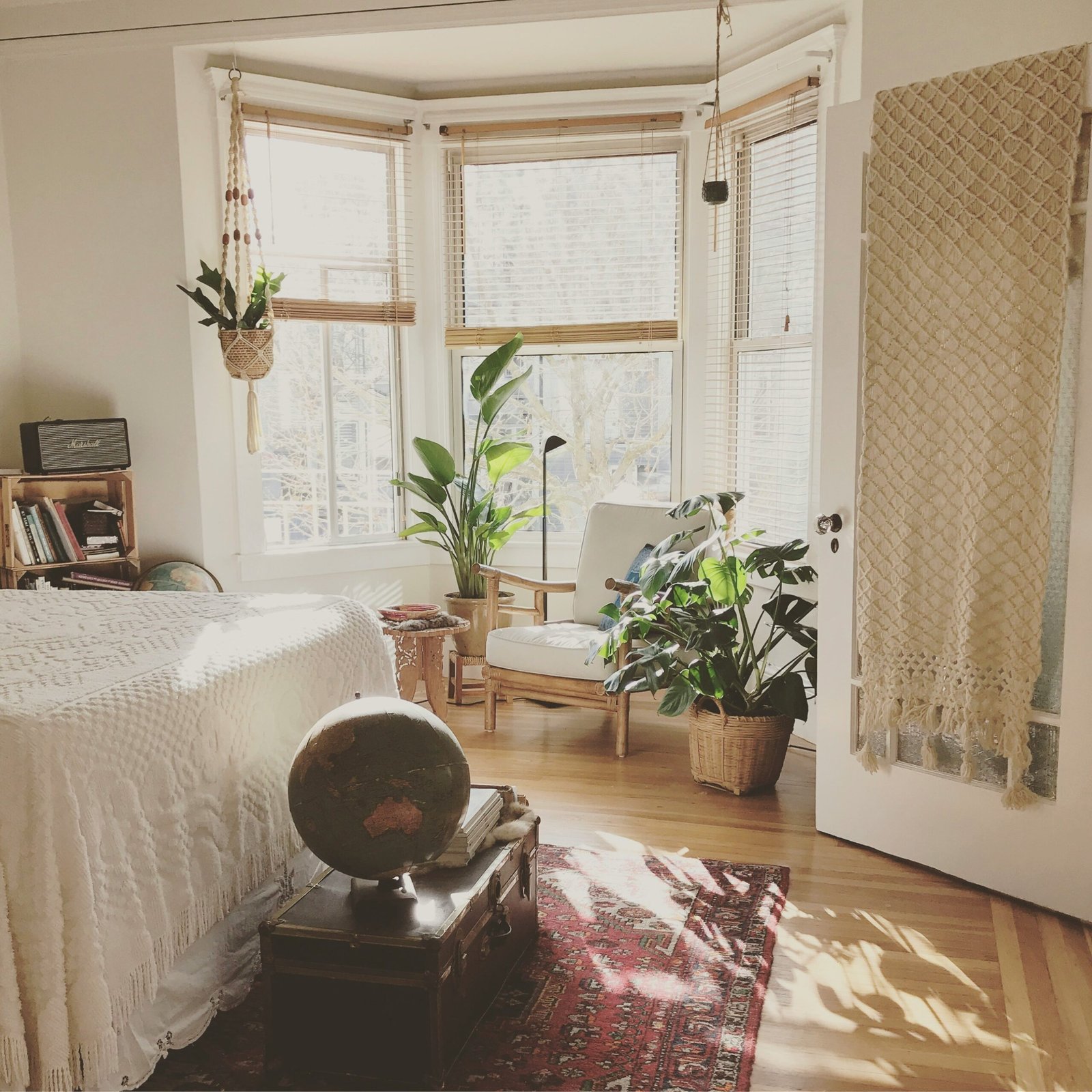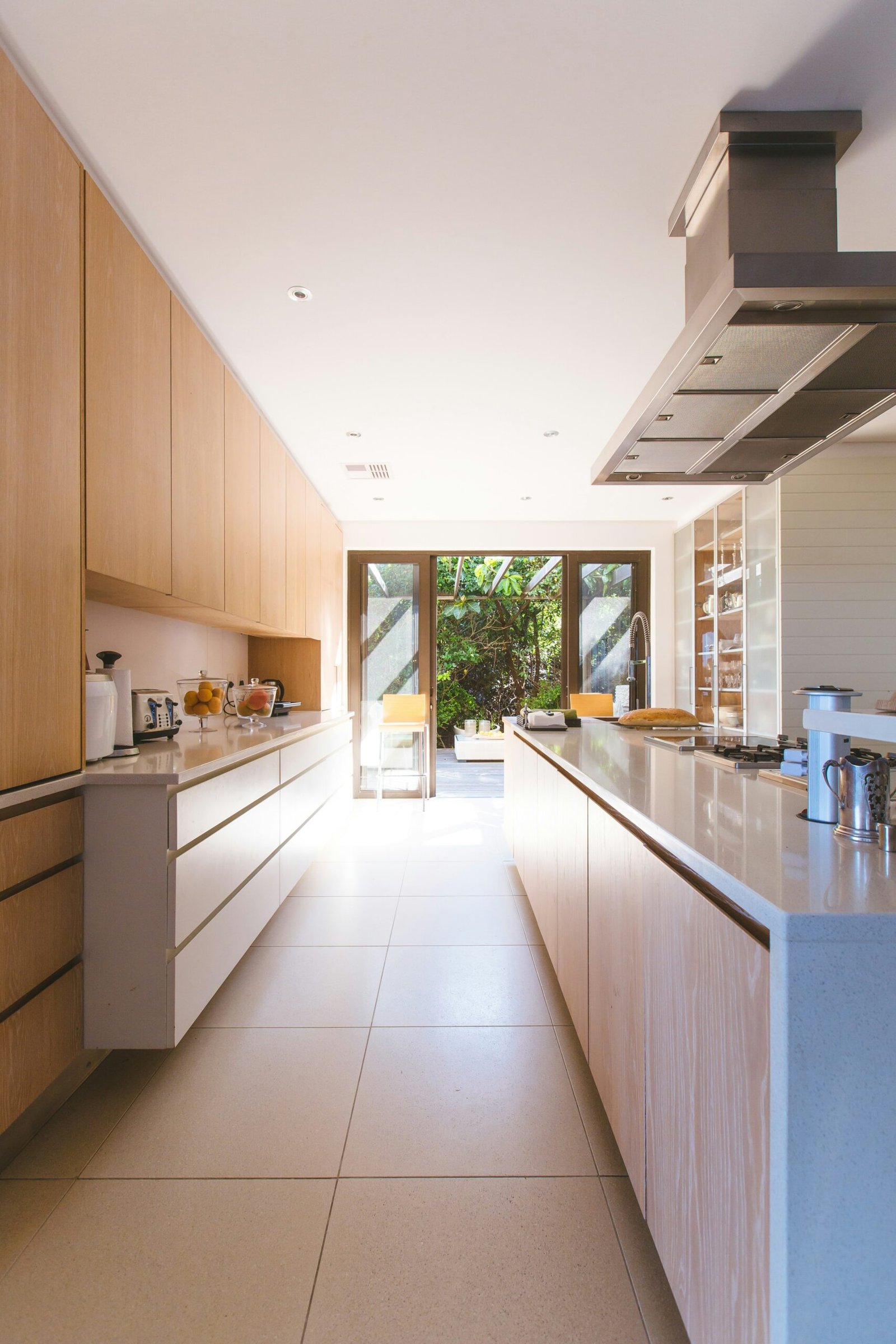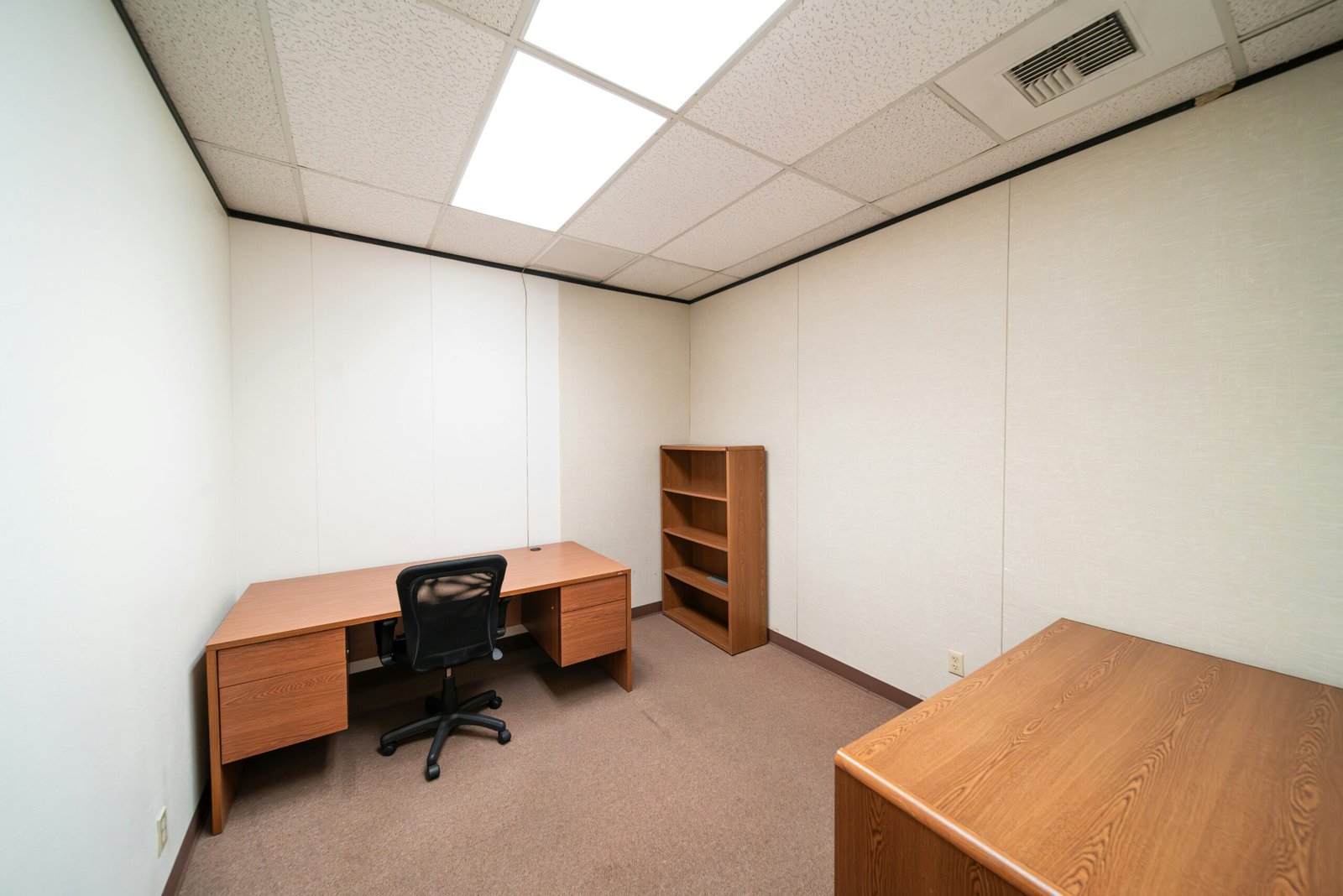Introduction to Bedroom Vastu
Vastu Shastra, a traditional Indian architectural philosophy, emphasizes the importance of harmonizing architectural designs with natural elements to promote well-being. Its principles are not merely confined to the construction of buildings but extend deeply into the design and arrangement of spaces within them, especially private areas like the bedroom. As a personal sanctuary for rest and romance, the bedroom plays a significant role in our overall health and relationships, making its alignment with Vastu an integral aspect to consider.
The significance of Vastu Shastra lies in its guidance on maximizing positive energy flow within a space, which is particularly crucial in a bedroom setting. The strategic placement of furniture, choice of colors, and direction of elements contribute to an environment that fosters tranquility and intimacy. By adhering to these principles, individuals can create a bedroom that not only serves its primary function of restful sleep but also nurtures romantic connections, thereby enhancing interpersonal relationships.
In essence, a bedroom designed with Vastu principles can cultivate an atmosphere conducive to peace, stability, and emotional bonding. For instance, the orientation of the bed, which is ideally placed in a specific direction, ensures that the occupants experience restful sleep while minimizing disturbances. Similarly, the arrangement of decor, such as artwork and furniture, can amplify the energy flow and foster a serene environment. This thoughtful incorporation of Vastu Shastra into bedroom design serves as a reminder of the interconnectedness between our living spaces and our emotional states, guiding us in creating a nurturing retreat that rejuvenates both body and spirit.
Choosing the Right Location for Your Bedroom
When designing a peaceful and harmonious bedroom, selecting the right location according to Vastu principles is paramount. The direction in which a bedroom is positioned can significantly influence the quality of rest, intimacy, and overall well-being of its occupants. Traditionally, the southwest corner of a home is deemed the most favorable location for a bedroom, as it is believed to promote stability and strength in relationships.
The southwest placement allows for a restful environment, encouraging deep sleep and emotional security. Additionally, it prevents disturbances from elements such as busy roadways or external noise, affording the inhabitants a sanctuary conducive to relaxation. Conversely, bedrooms located in the northeast may be more inclined to promote spiritual energy; however, they can disrupt restful sleep, hindering relaxation and intimacy. This area is better suited for meditation or study rooms rather than primary living spaces.
East-facing bedrooms enjoy the advantage of morning sunlight, which can energize the soul and elevate mood. This is particularly beneficial for individuals who prioritize wellness and strive to maintain a positive outlook on life. However, east-facing rooms can also disrupt sleep patterns if they receive excessive light early in the morning.
On the other hand, bedrooms located in the northwest can foster dynamic energy and social interactions; nevertheless, they may also evoke feelings of restlessness, reducing the quality of sleep. Ultimately, choosing the right bedroom location involves balancing various factors, including both the personal preferences and the established Vastu guidelines. By carefully considering these elements, one can create a sanctuary that promotes both restful sleep and nurturing relationships.
Designing a Harmonious Layout
Creating a serene environment within the bedroom is essential for promoting restful sleep and fostering intimacy. The layout of the bedroom holds significant importance in Vastu Shastra, which emphasizes the flow of positive energy, or prana. This flow can be optimized through intentional placement of furniture and essential elements in the space.
To begin, the positioning of the bed is crucial. Ideally, the bed should be placed in the southwest corner of the room, allowing individuals to sleep with their heads towards the south or east. This arrangement not only encourages better sleep but also enhances the bond between partners. In contrast, beds positioned in the northeast should be avoided, as they can disrupt energy flow and lead to restlessness.
Next, attention should be given to the placement of wardrobes. These should ideally be located in the southwest or west to maintain grounding energies and prevent clutter from interrupting the space’s harmony. Mirrors, while essential for personal grooming, should be placed carefully. It is advisable to avoid any mirrors facing the bed, as they can reflect energy and disturb the serenity of the sleeping environment. Instead, mirrors should be positioned on the side walls.
❤️ Powerful Real Love Spells That Work
Attract true love, reunite with your partner, and strengthen relationships with proven magic spells.
Furthermore, the incorporation of electronic devices within the bedroom merits consideration. It is generally recommended to minimize these devices, as they can produce electromagnetic fields that disrupt restful sleep. If technology such as televisions or computers must be included, placing them in a dedicated nook away from the bed is ideal.
In summary, by thoughtfully arranging the layout of the bedroom, including the orientation of the bed, the placement of wardrobes, mirrors, and the management of electronic devices, one can create a sanctuary that promotes positive energy, restful sleep, and a harmonious atmosphere for romance and relaxation. This mindful design not only adheres to the principles of Vastu but also contributes to overall well-being.
Color Schemes and Their Effects
Color plays a pivotal role in influencing our mood and emotions, especially in personal spaces like the bedroom. The choice of a color palette can significantly affect the atmosphere, mood, and energy levels within the room. For creating a sanctuary dedicated to rest and romance, it is essential to select colors that evoke tranquility while enhancing intimacy.
Soft, muted colors such as pastels are often recommended for bedrooms to promote relaxation. For instance, shades of lavender, light blue, and soft green can instill a sense of calmness. These colors are known to lower stress levels and create an inviting environment conducive to restful sleep. Furthermore, including gentle accents in these tones can help in maintaining a peaceful ambiance.
On the other hand, deeper colors can be utilized to create a romantic and cozy atmosphere. Rich hues such as burgundy, navy blue, and dark chocolate are effective in enhancing feelings of warmth and intimacy. These colors not only promote a connection but also add a touch of elegance and sophistication to the bedroom décor. However, it is crucial to strike the right balance between light and dark shades to prevent the room from appearing overwhelmingly dark, which can lead to feelings of anxiety.
Additionally, integrating neutral tones like beige, cream, or gray can act as a grounding element, harmonizing both vibrant and subdued colors. When combined thoughtfully, these neutral shades can enhance the overall aesthetic while ensuring the space remains inviting and comfortable. Using a color wheel can be a helpful tool in identifying complementary colors and creating a cohesive look. Overall, the effective use of color schemes in the bedroom is instrumental in fostering an environment that promotes both relaxation and romantic connections.
Decorative Elements and Their Significance
In the realm of Vastu Shastra, decorative elements play a crucial role in fostering an environment that promotes rest and romance. The thoughtful integration of specific artworks, textiles, plants, and other decorative features can significantly enhance the energy of a bedroom, aligning with Vastu principles. By understanding the impact of these elements, one can transform their bedroom into a sanctuary designed for relaxation and intimacy.
Artworks that depict serene landscapes or harmonious themes are particularly beneficial. Paintings featuring water bodies, lush greenery, or calm abstract forms can evoke feelings of tranquility. These visuals create a soothing atmosphere, which is essential for unwinding after a long day. It is advisable to avoid artwork that portrays loneliness or conflict, as such imagery can disrupt the peaceful vibes intended for the bedroom.
Textiles also play an important role in the aesthetic and energetic balance of the room. Soft, natural fabrics such as cotton or linen should be preferred for bed linens, curtains, and cushions. Choosing colors that align with the principles of Vastu—such as soft pastels or earthy tones—can further enhance the calming ambiance, while richer colors like deep reds can stimulate passion and warmth in romantic relationships.
Incorporating plants into bedroom decor is another powerful way to harness Vastu benefits. Indoor plants like peace lilies or snake plants not only purify the air but also promote positive energy. Plants should be strategically placed to ensure they are healthy and thriving, thereby enhancing the overall energy flow of the space. Additionally, candles and crystals can be employed to further amplify serenity and romance in the bedroom environment.
❤️ Powerful Real Love Spells That Work
Attract true love, reunite with your partner, and strengthen relationships with proven magic spells.
Overall, by carefully selecting and placing decorative elements, one can create a harmonious setting that encourages relaxation and deep connections, ultimately embodying the essence of a Vastu-compliant sanctuary.
Lighting: Creating the Right Ambiance
Lighting plays a crucial role in establishing an environment conducive to relaxation and intimacy within the bedroom. The right choice of lighting not only enhances the aesthetics of the space but also significantly influences one’s mood and energy levels. To create a sanctuary for rest and romance, it is essential to consider both natural and artificial light sources, ensuring they align with Vastu principles.
In terms of artificial lighting options, layered lighting is a productive approach, involving the integration of ambient, task, and accent lighting. Ambient lighting provides overall illumination, often achieved through ceiling fixtures or wall sconces. Task lighting, on the other hand, focuses on specific areas such as bedside tables and reading nooks, offering sufficient brightness for activities like reading or working. Accent lighting, implemented through decorative fixtures or dimmable lamps, allows for mood enhancement, casting a warm glow that fosters a romantic atmosphere.
When positioning lights, it is important to place them according to Vastu guidelines. Ideally, lights should be installed in the southeast corner of the bedroom, which is considered auspicious for the fire element. Moreover, ensure that the lighting is not overly harsh; opting for soft, warm-toned bulbs can create a more inviting ambiance. Dimmers are also beneficial as they allow flexibility in adjusting brightness levels according to different times of the day and occasions.
Incorporating natural light into the design of the bedroom is equally vital. Large windows or skylights can enhance the space, providing both illumination and a connection to the outdoors. Utilizing sheer curtains ensures privacy while still allowing sunlight to filter in during the day, promoting an invigorating atmosphere that aids in relaxation. Combining these strategies for lighting will result in a balanced environment ideally suited for both restful nights and romantic moments.
Clutter-Free Space: The Vastu Way
Creating a clutter-free space is essential for fostering an atmosphere of tranquility and intimacy in the bedroom. According to Vastu Shastra, the ancient Indian science of architecture, a clean and organized environment contributes significantly to personal well-being and harmonious relationships. Clutter can be detrimental, both physically and psychologically, as it often leads to feelings of chaos and distraction. To enhance your space, it is imperative to address the disarray effectively.
Begin by identifying areas in your bedroom prone to clutter. These may include nightstands, dressers, and under-bed storage. Aim to limit the number of items in these spaces by removing anything that does not serve a functional purpose or emotional value. For instance, consider donating or discarding clothing you no longer wear or items that evoke negative emotions. This process not only clears the physical space but also encumbers your mind with clarity and peace.
In addition, applying the Vastu principles of spatial arrangement can further enhance your sanctuary. Positioning larger furniture pieces, like beds and wardrobes, in a manner that promotes flow can significantly improve the room’s energy. Place your bed in the southwest corner of the room to align with Vastu recommendations, which may also create a more inviting atmosphere for rest and romance.
Moreover, maintaining a consistent organizational routine reinforces the benefits of a decluttered space. Allocate specific times to tidy up and ensure that all items are returned to their designated places immediately after use. Incorporating storage solutions like decorative boxes and shelving allows for an orderly environment that showcases your style while minimizing clutter.
By prioritizing a tidy bedroom through these actionable strategies, you are not just creating a visually appealing space but also cultivating a serene sanctuary conducive to rest and emotional connection.
Bringing Nature Indoors: Plants and Fresh Air
Incorporating plants into the bedroom can significantly enhance the space’s ambiance, making it a sanctum for rest and romance, in alignment with Vastu principles. According to Vastu Shastra, certain plants are deemed auspicious and their placement can promote tranquility and balance in the environment. Plants not only beautify a room but also contribute to overall well-being by improving air quality. Species such as the peace lily, jade plant, and snake plant are particularly favored for bedrooms due to their low maintenance requirements and air-purifying qualities.
The benefits of introducing greenery into the sleeping area extend beyond aesthetic appeal. Indoor plants actively convert carbon dioxide into oxygen, enhancing the air quality. They can reduce airborne toxins and elevate humidity levels, which can create a more comfortable atmosphere for relaxation. Moreover, certain plants like lavender and jasmine are known for their calming scents that can aid in achieving restful sleep, thus fostering a serene environment conducive to intimacy.
To maintain a healthy indoor environment, it is crucial to position plants strategically within the bedroom. They should be placed where they receive adequate natural light while still promoting a sense of privacy and comfort. Furthermore, it is advisable to avoid thorny plants, such as cacti, as they may create an unfavorable energy within the space. Regular maintenance, including watering and pruning, will not only keep the plants thriving but also contribute to a fresh and inviting atmosphere.
Overall, integrating plants into bedroom decor, as per Vastu guidelines, brings nature indoors, facilitating a peaceful sanctuary for relaxation and romance. Embracing the lush elements of nature can transform the bedroom into a haven of comfort and intimacy, enhancing well-being and promoting a healthier lifestyle.
Final Thoughts: Balancing Love and Serenity
The significance of a Vastu-compliant bedroom cannot be overstated when it comes to fostering both rest and romance. A well-designed bedroom, aligned with Vastu principles, serves as a sanctuary that nurtures emotional connection and relaxation. Essential elements such as the strategic placement of the bed, choice of colors, and the organization of furniture play crucial roles in enhancing the overall harmony of the space. These elements contribute to an environment where both partners can experience peace of mind as well as intimacy, thereby promoting a healthy relationship.
It is important to comprehend that the principles of Vastu are not merely aesthetic guidelines; they are environmental factors that significantly affect psychological well-being. For instance, a clutter-free and organized space allows for a more restful atmosphere, while incorporating calming colors can uplift moods and enhance emotional ties. By focusing on elements that cater to both love and serenity, individuals can create what may be termed as a romantic haven—a space that encourages moments of connection while also providing a retreat for rejuvenation.
As you contemplate the adjustments to your sleeping quarters, consider the transformative power of Vastu. Implementing the discussed guidelines can lead to noticeable improvements in both personal well-being and relationship dynamics. Simple modifications, such as adjusting the bed’s orientation or introducing natural light, can have profound impacts on how partners interact in the sacred space of their bedroom. It becomes evident that the art of balancing love and serenity requires both intention and action. By taking the necessary steps to create a Vastu-compliant bedroom, one can cultivate an environment that effectively supports both restful sleep and deep emotional bonds.











